
Clean cookware: It’s a hot topic. But with more people joining the conversation than ever and an industry rife with misleading marketing, who can you trust? As a culinary school grad, recipe developer, and head home chef, I’m passionate about cookware.
In fact, I love having access to different types of cookware materials so I can execute different cooking techniques. It can make or break a recipe. Really! Other than the quality of ingredients, the cookware material is one of the biggest reasons why the same recipe made by two different people can come out completely different. Here are my must-have materials for successful home cooking.
How I Use My Favorite Cooking Materials
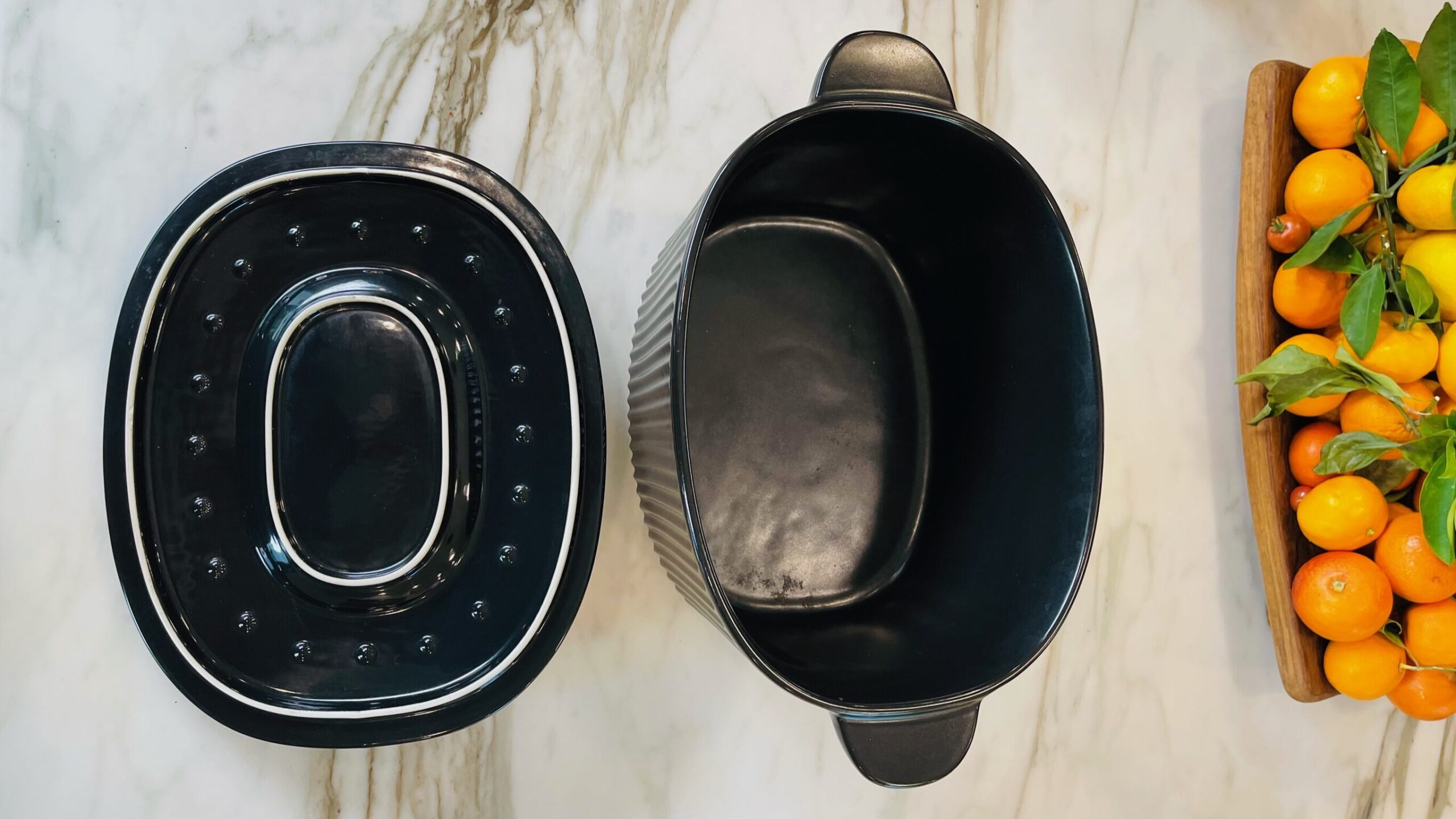
I use everything in my kitchen, from stainless steel, carbon steel, cast iron, ceramic-coated nonstick, to pure ceramic non-toxic cookware and bakeware.
Stainless Steel and Carbon Steel
I use stainless steel and carbon steel for hot, hot high-heat searing. It’s what creates a crusty, caramelized layer on a piece of protein or veg. I’ll usually sear something on the stovetop and finish it in the oven so I don’t overcook the exterior.
Ceramic-Coated Nonstick
I use my ceramic-coated nonstick for delicate items like eggs and fish — and anything else that requires medium to medium-low cooking temperatures. This cooking surface does not do well on high heat, as it will quickly degrade the coating and shorten the life of the pan. It’s the very reason why people ruin this type of cookware within months (and end up angry!), so it should be exclusively reserved for those delicate items.
Enameled Cast Iron
Enameled cast iron can be used for both searing and low and slow cooking methods. But it can be heavy and tough to move around the kitchen — it’s kind of like lifting weights while you cook. That’s alright some days, but sometimes I’m not interested in an arm workout with my dinner.
Pure Ceramic
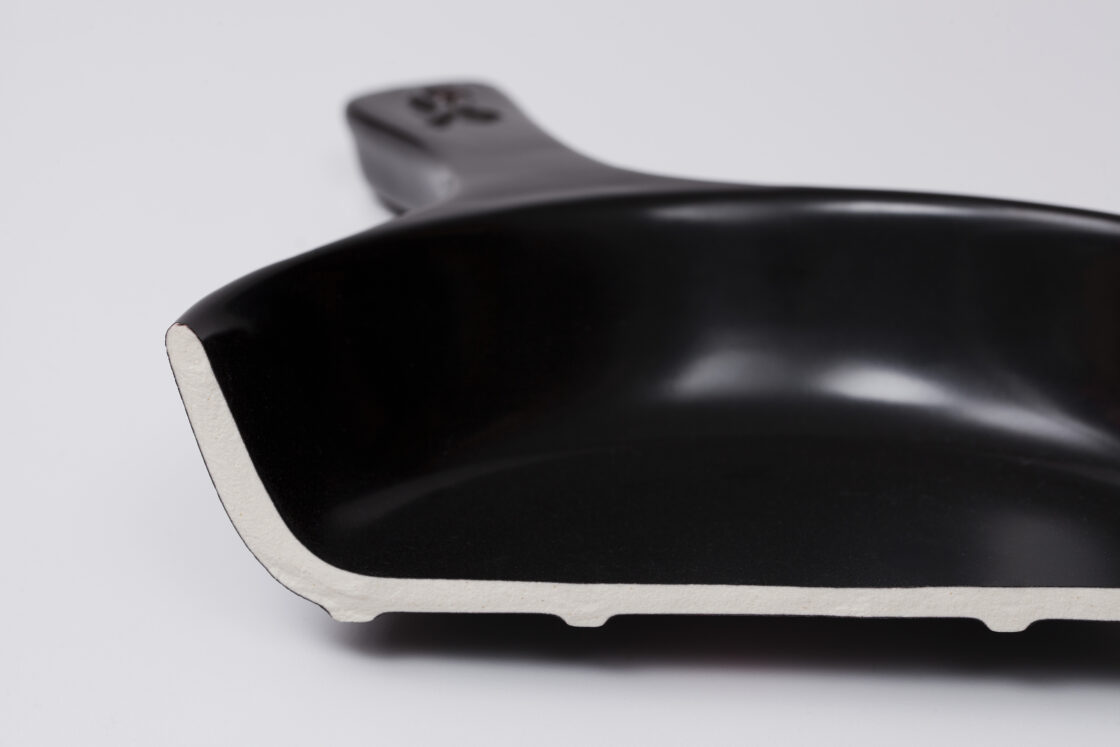
Pure ceramic cookware has quickly risen to the top of my list. Why? I’m a fan of low and slow cooking. It makes everything taste better (it really does!). Also known as ‘wet’ cooking, low and slow methods deeply tenderize proteins, meaning your meat falls apart when a fork pierces it. Slow cooking also develops the layers of flavors found in sauces, soups, and stews (like your grandmother’s famous stew or tomato sauce recipe she cooked for hours, or even days).
I also love that pure ceramic is a very simple material — you know exactly what’s in it. There isn’t a metal core or layers upon layers of different metals, materials, and coatings that make you wonder, “What’s this really made of, and is it safe to cook with?”
4 More Reasons to Love Pure Ceramic Cookware
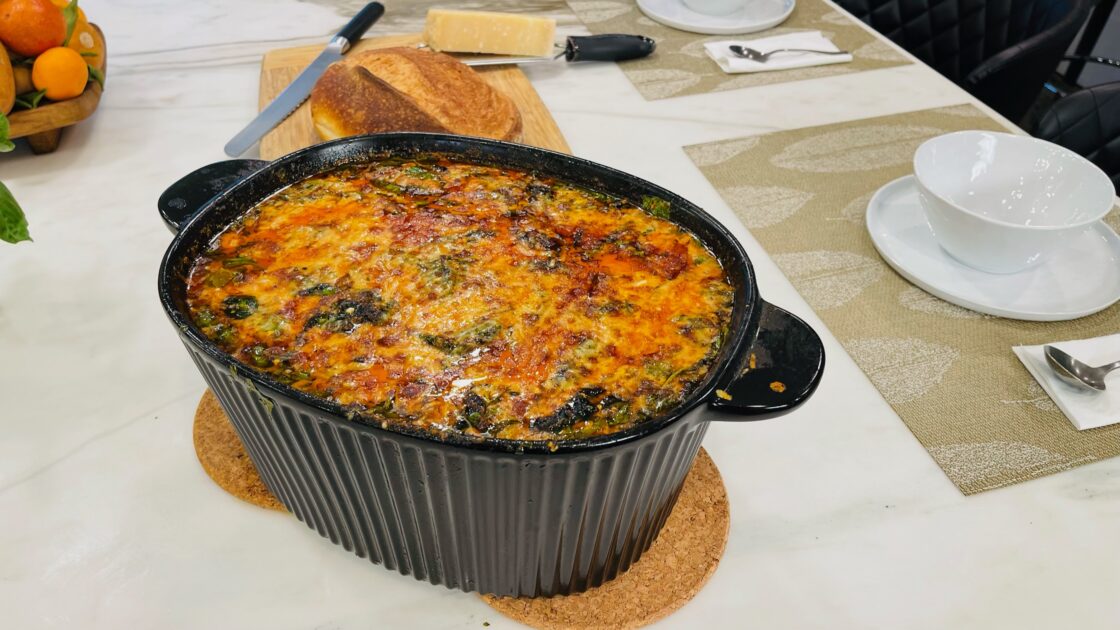
1. It Has a Rich History
Pure ceramic cookware has been used for literally thousands of years. It’s crafted from simple ingredients like clay, water, and natural oxides.
Pure ceramic cooking is an ancient technique that has been used by the Chinese for millennia. The French started using it during the Renaissance and Medieval periods, when it became essential to European cuisine. It’s absolutely not a new material, but it’s making a comeback and may be new to modern cooks.
2. It’s Naturally Nonstick
I remember opening the packaging of my first Xtrema skillet. I vividly remember reading the notecard that guided you on how to use their cookware and how to achieve a ‘naturally nonstick’ surface. I was skeptical, so I decided to put the cookware to the ultimate nonstick test: eggs.
Based on the instructions, I preheated the skillet, then added my oil and brought it up to temperature. Finally, I added my eggs. Unexpectedly, my eggs slid delightfully around the pan without binding to the bottom. That instantly caught my attention, and I’ve been hooked ever since.
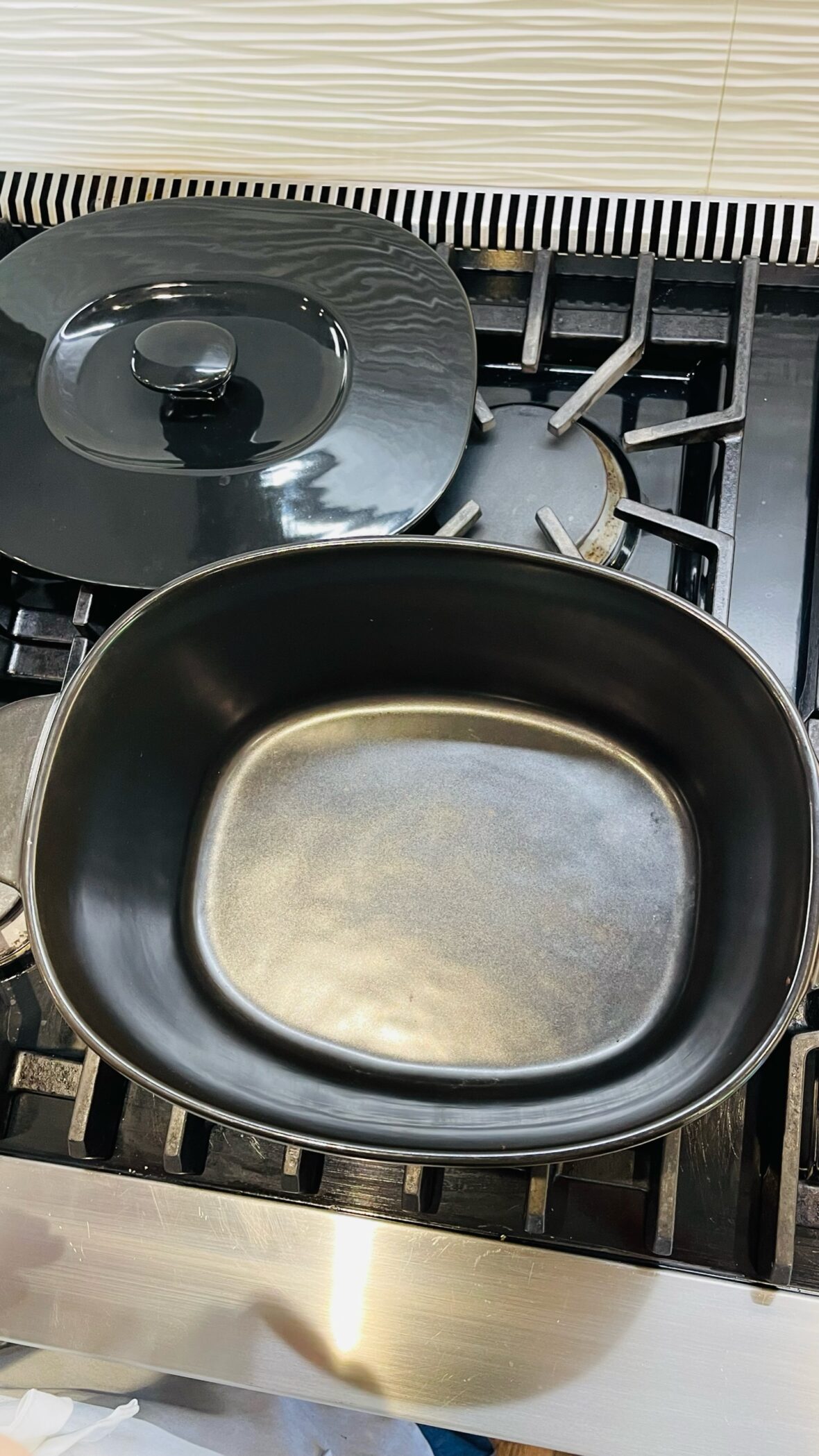
3. Unbeatable Heat Retention
When I first heard about pure ceramic cookware, I thought there was no way the heat retention could compare to cast iron. I was wrong. IMHO, the heat retention is even better than cast iron (which is a big statement!). After making this lasagna soup in my Dutch oven and removing it from heat, the soup was still simmering 20 minutes later.
4. It’s Free of Toxic PFAS, aka ‘Forever Chemicals’
Industrialization brought the evolution of cookware, with conveniences like nonstick pans. However, what most people didn’t know is that the first nonstick pans made by Teflon (owned by DuPont) contained a toxic plastic coating made from PFAS chemicals, aka ‘forever’ chemicals.
Today, we know that these ‘forever’ chemicals collect in human organs and the environment — and once they’re there, they don’t break down. This buildup has been linked to some serious health issues like testicular and kidney cancer, infertility, liver damage, and thyroid disease2. No thanks.
PFAS, aka Forever Chemicals, Explained
What are PFAS chemicals? They’re a class of synthetic substances that contains over 12,000 chemicals, including PTFE, PFOA, PFOS, GenX, and more. They’re used in the production process of today’s PTFE nonstick coatings (including Teflon) and many other consumer products.
When cheap nonstick coatings wear out, the exposed core (typically made from a reactive metal like. aluminum or copper) may also leach heavy metals into your food. And let’s not forget that the nonstick coating itself can flake into your food. If a PTFE pan is overheated, it can release toxic fumes that can lead to flu-like symptoms called polymer fume fever3.
These fumes are potent enough to hospitalize humans and kill pet birds4. In other words, there’s a long list of reasons to avoid using PTFE nonstick in your kitchen.
Misleading Labels: What You Need to Know
As with other “clean” or “green” products, claims and labels can be misleading when it comes to cookware. It’s common to see “PTFE-free,” “PFOA-free”, and “made without PFOA” on labels, but these claims don’t always mean a lot. Just because something is PTFE-free doesn’t mean it’s PFAS-free — the product might not have PTFE, but it could still contain other PFAS chemicals.
For instance, some brands rename their PTFE coatings with fancy brand names while using the “PFOA-free” label. The PFOA-free label is effectively meaningless because the chemical was phased out in 2016, so brands aren’t legally allowed to use the chemical anyway.
For all these reasons, it’s important to become an informed consumer and get to know what every label means. But if you’re sick of being misled and having to read between the lines, going for a natural material like pure ceramic could be the answer. To point you in the right direction, here are some of my favorite pure ceramic cookware pieces made by Xtrema!
How I Use Xtrema Cookware’s Pure Ceramic Pieces
The Signature Skillet

The first piece of cookware I tried from Xtrema’s Pure Ceramic cookware collection (and the one I had my “ah-ha” nonstick moment with!) was the Signature Skillet.
Because of its naturally nonstick properties, I make everything from delicate baked eggs like this shakshuka recipe to seared and oven-baked salmon.
Really anything that requires time on both the stovetop and in the oven is a perfect contender for this skillet.
Available in: 7″, 9″, and 11″
Price: $102.99 $82.39, $172.99 $138.39, and $202.99 $162.39
*At time of publish
The Classic Oval Dutch Oven
I’m a huge fan of Dutch ovens. The idea of cooking a whole meal like roast chicken and veg, soups, stew, broths, or a whole loaf of bread in a beautiful oven is kind of magical.
It literally conjures up thoughts of cozy December evenings in, or a rainy fall Sunday afternoon spent in the kitchen.
What makes this ceramic Dutch oven unique is its weight — it’s much lighter than cast iron. Think about it: you’re dealing with a large vessel that gets weighed down with food and liquid. Whether that’s a whole bird with veg or a stew with beans and stock, it’s going to get heavy!
This lightweight ceramic piece is much easier to move from stovetop to oven and to table (in fact, you can read about my experience with the Classic Oval Dutch oven here).
Plus, the heat retention of pure ceramic cookware means that when I’m serving a big group and want the food stay warm, this Dutch oven is ideal.
Price: $349.99 $279.99
*At time of publish
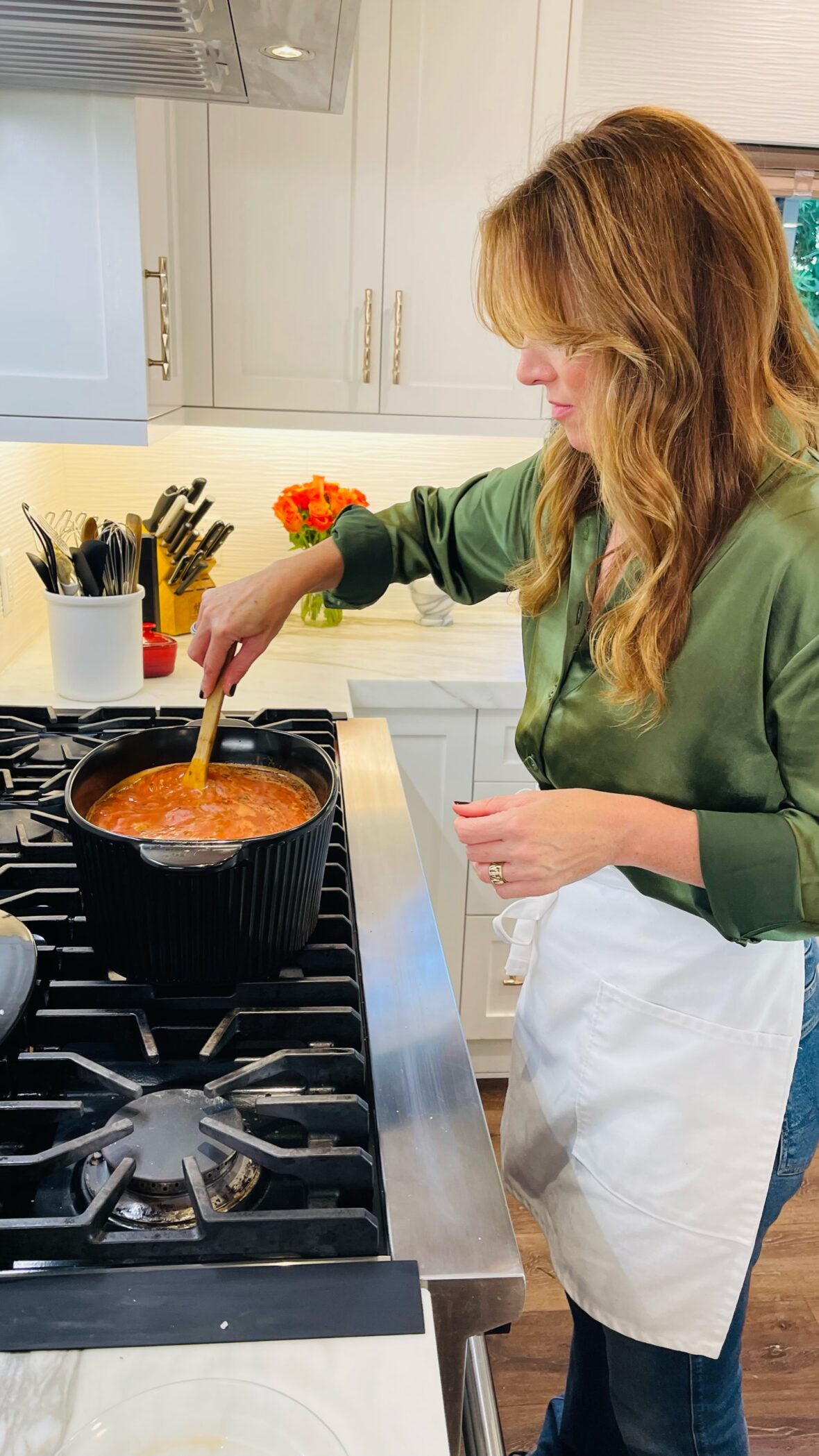
The Versa 5.5-Quart Stock Pot

Everyone needs a solid stock pot. You can use it to make your favorite sourdough loaf, soups, stews, bone broths, and so much more.
You also need one to boil water for your favorite pasta for a quick weeknight dinner or your next dinner party. This one is ideal.
Price: $122.99 $98.39*
*At time of publish
The 10” Signature Saute Pan with Lid

If you’re cooking up pasta in your 5.5-Quart Stock Pot, you need a nicely sized sauté pan to go with it.
I prefer larger sauté pans so I have a wider cooking surface to work with, meaning everything can fit in one layer across the bottom. That makes it possible to create textures and layers of flavors (like caramelization!) with higher heat settings.
If you’re dealing with a smaller pan that forces you to stack everything, you’re likely to create a lot of steam, which usually results in soggy, bland dishes (think: boiled vegetables like broccoli or Brussels sprouts that stink up the house.)
Unless cooking with steam is your intention, stick to a sauté pan like this one that gives you room to spread your food out.
Price: $232.99 $186.39
*At time of publish
Tips and Techniques for Cooking with Pure Ceramic
There are a few things to keep in mind when cooking with pure ceramic. You need to preheat it — think of it like an oven. You want to start it on low to medium-low heat for about 3-5 minutes. Next, add your oil or healthy fat. Then, if desired, you can turn up the temperature.
Because these cooking vessels hold heat so well, you may not need as high of a temperature as you’re used to. When I make a whole roasted chicken in the Dutch oven, it finishes about 15 minutes before its normal cooking time, which is ideal for busy weeknights.

Supporting a Family-Owned Company
The final reason I’ve been excited to share my experience with Xtrema Cookware is that they’re an authentic family-owned and run company. The founder, Rich Bergstrom, has over forty years of experience in the cookware industry. He’s also immunocompromised, so he has a personal stake in his mission to create the cleanest cookware possible.
From the beginning, he knew that ceramic would be the foundation for his clean cookware line. He set out to develop one of the only 100% pure ceramic cookware brands on the market, and the rest is history.
Sources:
- https://www.ewg.org/tapwater/contaminant.php?contamcode=E207
- https://www.cancercenter.com/community/blog/2021/09/does-teflon-cause-cancer
- https://www.ncbi.nlm.nih.gov/pmc/articles/PMC4544973/
- https://www.ewg.org/research/canaries-kitchen

